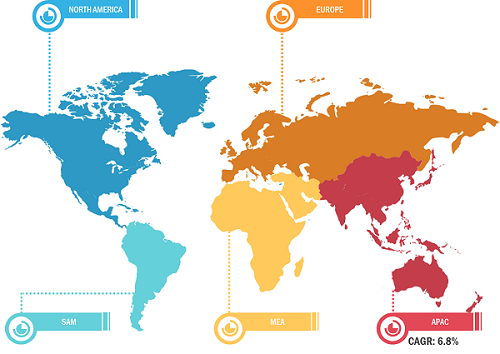The non-alcoholic beverages market size is expected to reach US$ 1,902.85 billion by 2028, registering at a CAGR of 6.2% from 2022 to 2028, according to a new research study conducted by The Insight Partners.
Increasing Consumption of Bottled Water Boosts Non-Alcoholic Beverages Market
Non-alcoholic beverages include carbonated soft drinks, bottled water, dairy-based beverages, dairy alternative beverages, fruit juices, nectars, sparkling fruit juices, non-alcoholic beers, malt beverages, energy and sports drinks, and ready-to-drink tea and coffee. Carbonated soft drinks account for a prominent share in the market, followed by bottled water, dairy-based beverages, and juices and nectars. The non-alcoholic beverages market growth is majorly attributed to rising urbanization, increasing demand for convenience food and beverages, high consumer purchasing power, and growing health consciousness. Manufacturers of non-alcoholic beverages are focusing on product innovation to cater to emerging consumer trends. They are lowering the sugar content and using natural sweeteners to target calorie-conscious consumers. These initiatives are driving the non-alcoholic beverages market.
Non-Alcoholic Beverages Market Size, by Region
Non-Alcoholic Beverages Market Forecast to 2028 - COVID-19 Impact and Global Analysis By Type [Carbonated Soft Drinks, Juices & Nectars (Sparkling Fruit Juices and Others), Bottled Water Dairy-Based Beverages, Dairy Alternative Beverages, RTD Tea & Coffee, Non-Alcoholic Beers, Malt Beverages, and Others], Packaging Type (Bottles, Cartons, Cans, and Pouches), Category (Sugar-Free and Conventional), and Distribution Channel (Supermarkets & Hypermarkets, Convenience Stores, Online Retail, and Others)
Non-Alcoholic Beverages Market Share and Growth by 2028
Download Free Sample
Health priorities of consumers are changing dramatically. They are increasingly replacing sugary drinks with healthy, nutrient-enriched beverages. Bottled water has gained immense traction among consumers in recent years. Bottled water keeps the body well-hydrated and boosts the body’s metabolism. It acts as an appetite suppressant, which aids the weight reduction process. Moreover, it helps in cleansing the gut, which boosts digestive health. People choose bottled water over other sugar-dense beverages due to increased health concerns. The consumption of bottled water is expected to increase prominently in the coming years, owing to consumers' changing lifestyles and increasing preference for healthy beverages, driving the non-alcoholic beverages market.
Non-alcoholic beers are also expected to witness immense demand in the coming years due to the rise in the sober-curious population. According to an article by CivicScience, as of October 2022, the sober-curious population in the US increased to 19% from 12% in 2020. People are decreasing their alcohol intake due to rising health concerns and increasing prevalence of obesity, liver infections, and heart diseases. This factor is driving the non-alcoholic beers segment.
Impact of COVID-19 Pandemic on Non-Alcoholic Beverages Market
The COVID-19 pandemic affected economies and industries in various countries due to lockdowns, travel bans, and business shutdowns. The pandemic disturbed the manufacturing processes due to lockdown restrictions imposed by government authorities in various countries.
However, the COVID-19 pandemic positively impacted the non-alcoholic beverages market as the consumption trends changed significantly. The preference for healthy beverages such as fortified fruit and vegetable juices, smoothies, dairy alternatives, low-sugar functional and sparkling waters, and protein drinks increased significantly. Immunity-boosting fruit juices witnessed high demand amid the outbreak. This opened significant opportunities in the sugar-free beverages space. Also, due to the closure of foodservice outlets, the retail sales of beverages such as ready-to-drink tea, coffee, and fruit juices increased during the pandemic.
However, due to operational difficulties, raw material shortage, and lack of inventories, there was a demand-supply gap that hindered the profitability of many small as well as large-scale players in the non-alcoholic beverages market. However, in 2021, the economies started their operations, which positively impacted the global marketplace. Moreover, the manufacturers are permitted to operate at full capacity, which helped them overcome the demand and supply gap. Additionally, consumers are increasingly prioritizing their health, which is expected to boost the demand for non-alcoholic beverages in the coming years.
The "Non-Alcoholic Beverages Market Analysis to 2028" is a specialized and in-depth study of the food & beverages industry, focusing on the market trend analysis. The report aims to provide an overview of the market with detailed segmentation. The market is segmented based on type, packaging type, category, distribution channel, and geography. Based on type, the market is segmented into carbonated soft drinks, bottled waters, juices & nectars, dairy-based beverages, dairy alternative beverages, RTD tea & coffee, non-alcoholic beers, malt beverages, and others. The juices and nectars segment is further segmented into sparkling fruit juices and others. Based on packaging type, the market is segmented into bottles, cartons, cans, and pouches. Based on category material, the market is segmented into sugar-free and conventional. Based on distribution channel, the market is segmented into supermarkets & hypermarkets, convenience stores, online retail, and others. Based on geography, the market is segmented into 5 main regions—North America, Europe, Asia Pacific, the Middle East & Africa, and South & Central America. In 2021, Asia Pacific dominated the non-alcoholic beverages market and is expected to register the highest CAGR during the forecast period.
Contact Us
Phone: +1-646-491-9876
Email Id: sales@theinsightpartners.com